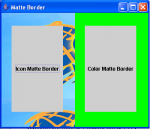Drag and Drop an Icon in Java
This tutorial will teach you how to create a drag and drop an Icon in java.
So, now let's start this tutorial!
1. Open JCreator or NetBeans and make a java program with a file name of dragDropIcon.java.
2.
- Read more about Drag and Drop an Icon in Java
- Log in or register to post comments
- 422 views






